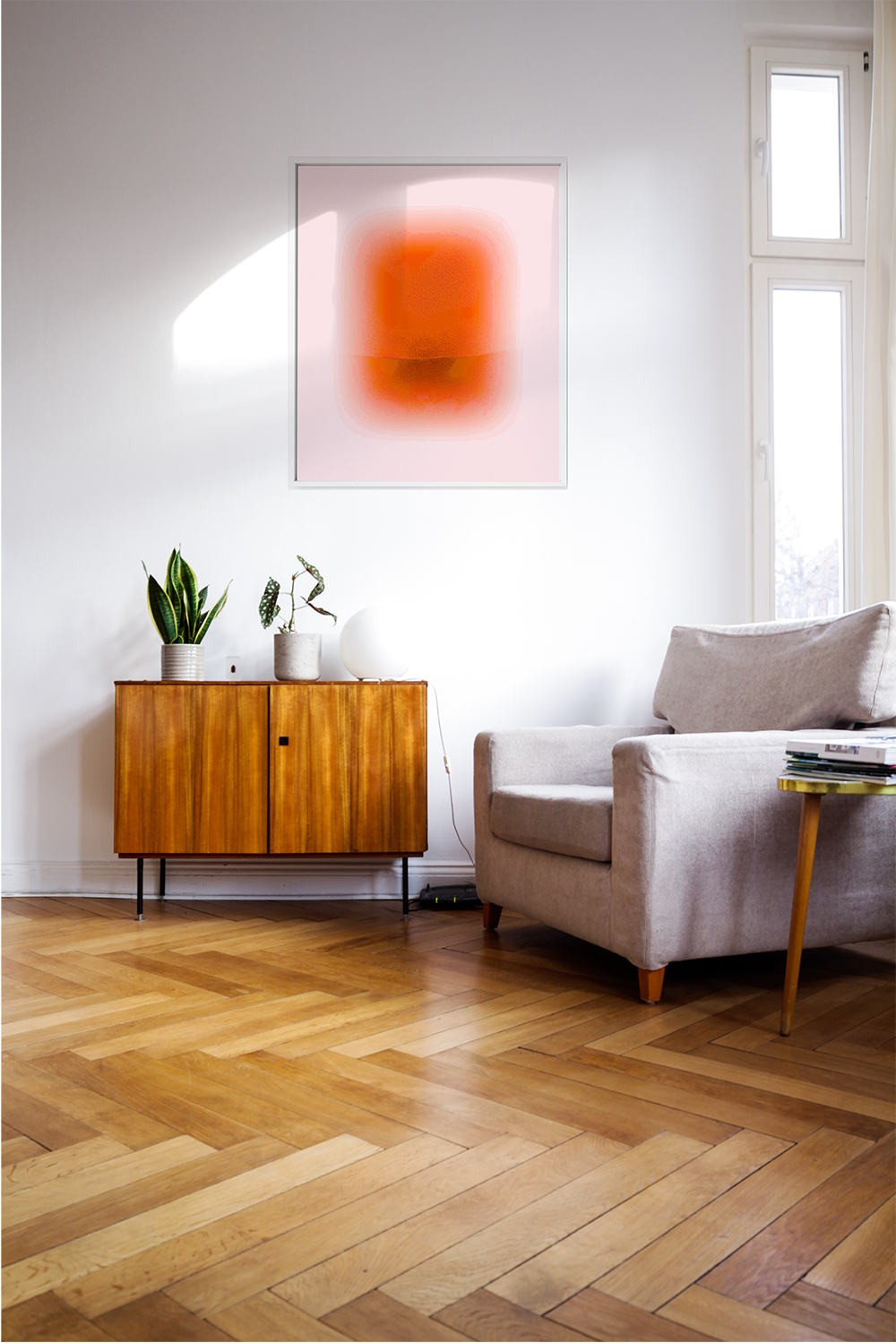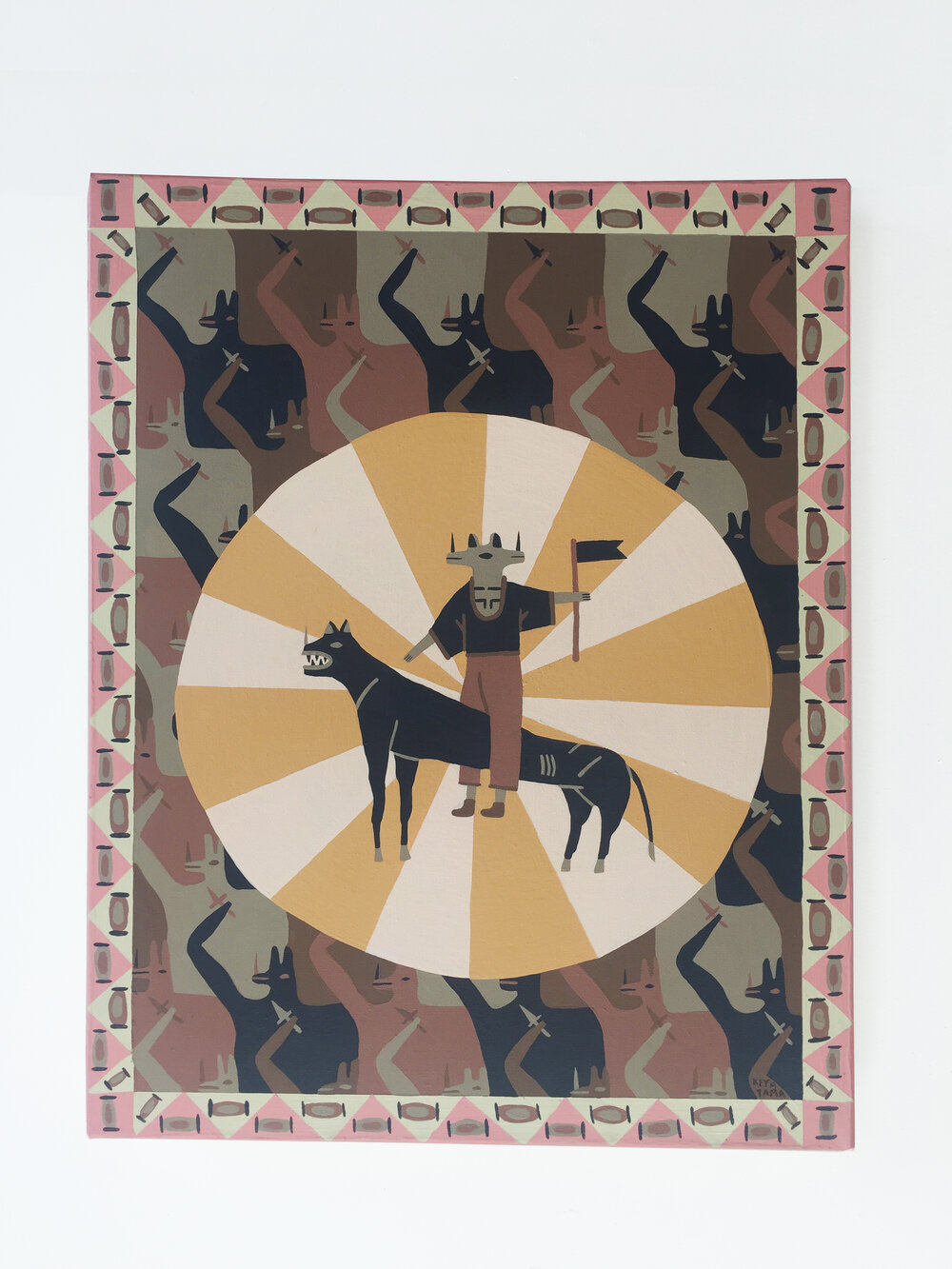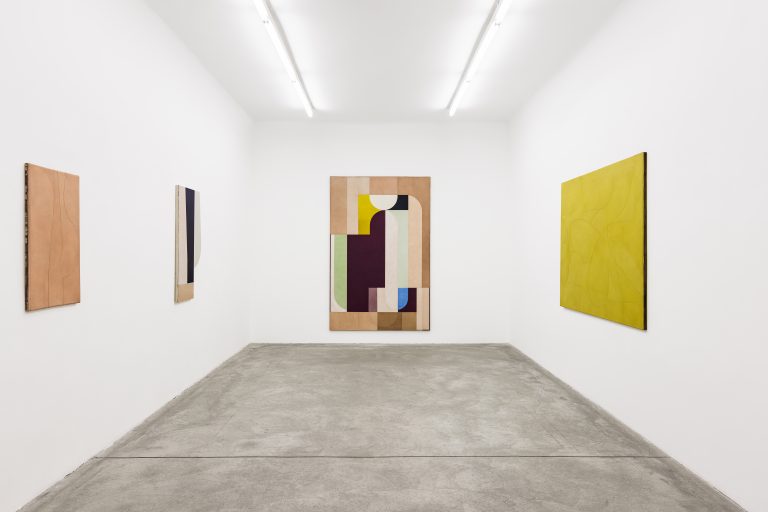Notebook 10, l'enfance de sanbras
2021 - Installation (Installation)
28 x 29 cm
Kelly Sinnapah Mary
Notebook 10 , l ‘enfance de sanbras (The Childhood of Sanbras) series by Kelly Sinnapah Mary is a sequel to an earlier series by the artist titled Cahier d’un non retour au pays natal (2015). This earlier work considers the process of reconstructing an identity of the Indian workers who arrived in the Caribbean during the post-slavery period. The work addresses the conditions of recruitment of these Indian workers, the strategies of the recruiters, how they lured them onto ships to bring them back to the plantations. Inspired by two authors, Aime Cesaire and Khal Torabully, the artist reinterprets masterworks of Caribbean literature. The Childhood of Sanbras series approaches another axis of reflection wherein Sinnapah Mary engages with her experiences and memories as a child, and the characters she identified with, while exploring current stories about the Indian diaspora in the French West Indies. Working with the concept of memory, her notebooks function like diaries in which characters take form and retell a story through drawings and sculptures that refer to a ludic universe of children. The series introduces the stories of Sanbras, a little girl in a school uniform and braids—an element so present in the artist’s practice that serves as a metaphor for the construction of identity through the gesture of braiding. The artist’s narrative mixes elements of Caribbean culture, Maroons, and Hinduism. Sanbras, in some of the works, has extra arms, legs, or a third eye. The little girl meets other friends throughout the story and builds a community. This resilient new village formed by Sanbras is a reference to the Marronage, of which she is part and wishes to build a new ecosystem. In the sculptures that accompany the notebooks, the artist explores Sanbras in a more material and corporeal manner, giving another dimension to the character through an ingenuous naivety.
Kelly Sinnapah Mary is a multidisciplinary artist who’s work is informed by the diasporic journey of her ancestors. She is the descendant of indentured laborers sent from India to Guadeloupe by the French Government in the 19th century to replace the free labor of the transatlantic slave trade. Sinnapah Mary’s practice reflects on her Indo-Caribbean identity by unpacking the details of her ancestors’ middle passage to Guadeloupe. Through the lens of science fiction, she often explores the so-called feminine universe; working with floral themes, soft materials, and fairy tales, using techniques that contrast the poignant and politically charged subject matter she addresses. From this friction, Sinnapah Mary traces her ethnic heritage, while questioning her roots as someone caught in two nested worlds—confronting concepts of ‘negritude’ and ‘coolitude’. ‘Coolie’, an expression coined by Caribbean poet Khal Torabully, is a pejorative name given to Indians who migrated to the Caribbean.
Colors:
Related works sharing similar palette

© » KADIST
Cristóbal Lehyt
2016Cristóbal Lehyt has conducted thorough research on the historical and cultural complexity of the northern region of Chile where the Atacama Desert is located...

© » GAS
Christine Wilkinson - Fragments of Wild series – Gina Cross - Curator + Mentor Close Thin Icon Close Thin Icon Your cart Close Alternative Icon Now partnered with Art Money for interest free art collecting Now partnered with Art Money for interest free art collecting News Written by Gina Cross Previous / Next Following a successful showing at Photo London 2021, we are pleased to launch two new series of works by Christine Wilkinson...

© » SLASH PARIS
Gilles Aillaud — Acquisitions récentes — Galerie Loevenbruck — Exposition — Slash Paris Connexion Newsletter Twitter Facebook Gilles Aillaud — Acquisitions récentes — Galerie Loevenbruck — Exposition — Slash Paris Français English Accueil Événements Artistes Lieux Magazine Vidéos Retour Gilles Aillaud — Acquisitions récentes Exposition Peinture Vue de l’exposition Gilles Aillaud...

© » ARTNEWS REVIEWS
Black Figures, Modern Art Enter the Met’s European Painting Galleries – ARTnews.com Skip to main content By Alex Greenberger Plus Icon Alex Greenberger Senior Editor, ARTnews View All November 20, 2023 10:31am Pablo Picasso joins El Greco in the Met's new European paintings presentation, which expands the purview to include modern art...

© » KADIST
Lydia Gifford
2011Lydia Gifford composes her work between pictorial expression and its inscription within an exhibition space...

© » KADIST
Alejandro Marré
2007Typical Weapons is a series of sculptural interventions where Alejandro Marre transforms traditional Guatemalan craft objects usually sold as souvenirs into weapons...

© » GALERIE MAGAZINE
8 Must-See Solo Gallery Shows in February 2024 - Galerie Subscribe Art + Culture Interiors Style + Design Emerging Artists Discoveries Artist Guide More Creative Minds Life Imitates Art Real estate Events Video Galerie House of Art and Design Subscribe About Press Advertising Contact Us Follow Galerie Sign up to receive our newsletter Subscribe Installation view, Brian Rochefort...

© » SLASH PARIS
Laurent Le Deunff — Easter Eggs — Galerie Semiose — Exposition — Slash Paris Connexion Newsletter Twitter Facebook Laurent Le Deunff — Easter Eggs — Galerie Semiose — Exposition — Slash Paris Français English Accueil Événements Artistes Lieux Magazine Vidéos Retour Laurent Le Deunff — Easter Eggs Exposition Dessin, sculpture, techniques mixtes Laurent Le Deunff, vue de l’exposition Easter Eggs, galerie Semiose, Paris Courtesy of the artist & Semiose, Paris — Photo : DR Laurent Le Deunff Easter Eggs Encore 19 jours : 18 novembre → 30 décembre 2023 Les sculptures présentées dans l’exposition Easter Eggs se présentent comme des totems composés d’une suite inattendue d’objets, culturels ou naturels, associés avec une très grande liberté...

© » SLASH PARIS
Laurent Le Deunff — Easter Eggs — Semiose Gallery — Exhibition — Slash Paris Login Newsletter Twitter Facebook Laurent Le Deunff — Easter Eggs — Semiose Gallery — Exhibition — Slash Paris English Français Home Events Artists Venues Magazine Videos Back Laurent Le Deunff — Easter Eggs Exhibition Drawing, sculpture, mixed media Laurent Le Deunff, vue de l’exposition Easter Eggs, galerie Semiose, Paris Courtesy of the artist & Semiose, Paris — Photo : DR Laurent Le Deunff Easter Eggs Ends in 19 days: November 18 → December 30, 2023 The sculptures featured in the exhibition Easter Eggs are totem-like forms, made up of a combination of unexpected objects, both natural and cultural, that the artist has put together with a great sense of freedom...

© » HYPERALLERGIC
Artist Rodrigo Valenzuela’s Futuristic Ruins Unveiled in LA Skip to content Rodrigo Valenzuela, "The Underpinning" (2023) (photo Matt Stromberg/ Hyperallergic ) LOS ANGELES — On Saturday afternoon, a crowd gathered at Los Angeles State Historic Park on the edge of Chinatown for the opening of Rodrigo Valenzuela’s new public artwork, commissioned by the local nonprofit Clockshop...

© » ARTS EQUATOR
How Dép Tổ Ong Goes From Timeless Family Keepsake to Millennial Icon (via Saigoneer) | ArtsEquator Thinking and Talking about Arts and Culture in Southeast Asia Articles September 16, 2018 Back in 2014, amid the weekly cycle of news, a particular image was more striking than most: Doctor and Professor Ngo Bao Chau stood in the middle of a makeshift classroom in a rural village in Thai Nguyen Province while teaching local kids...

© » KADIST
Nohemí Pérez
2016A rich and isolated region, El Catatumbo is located near the border with Venezuela...








